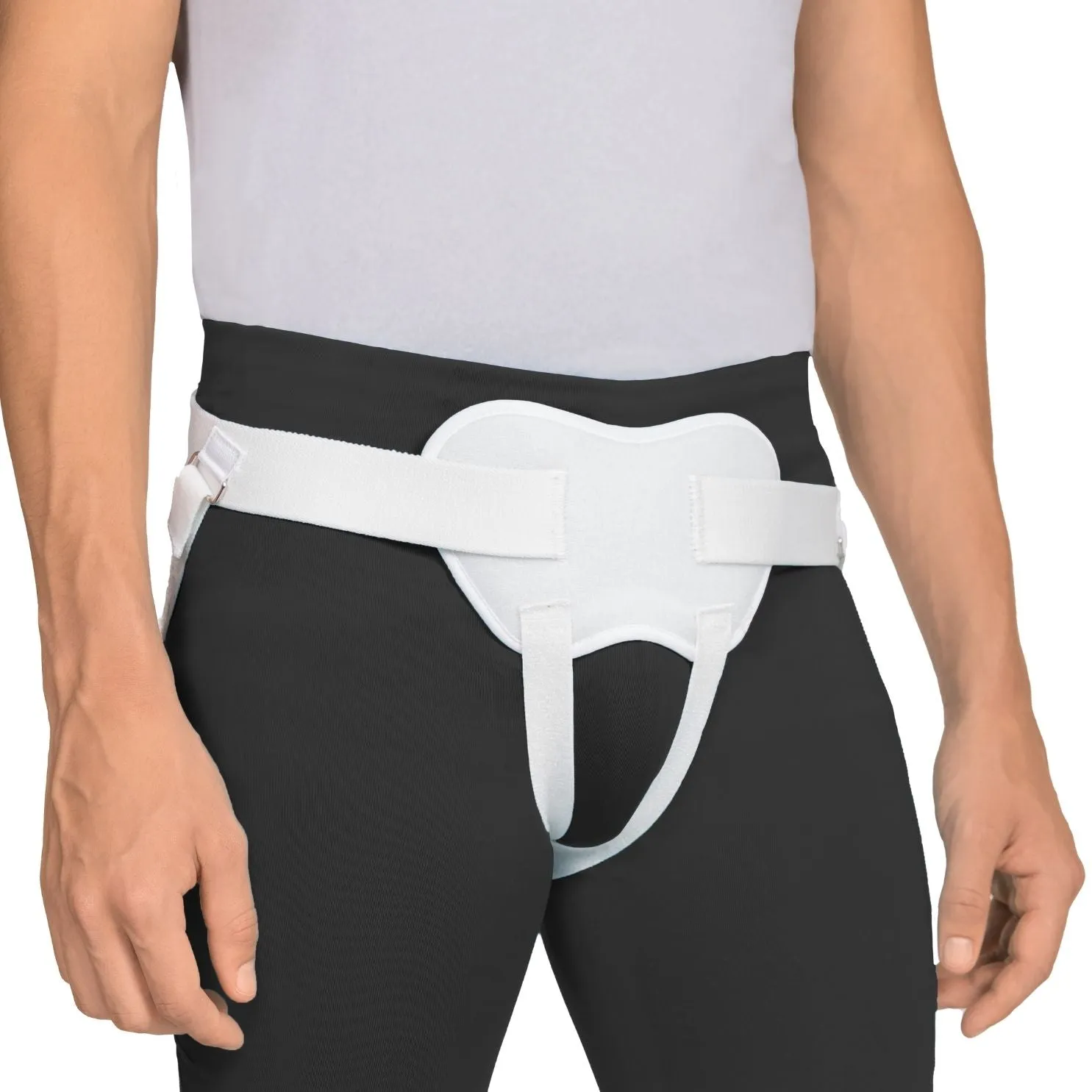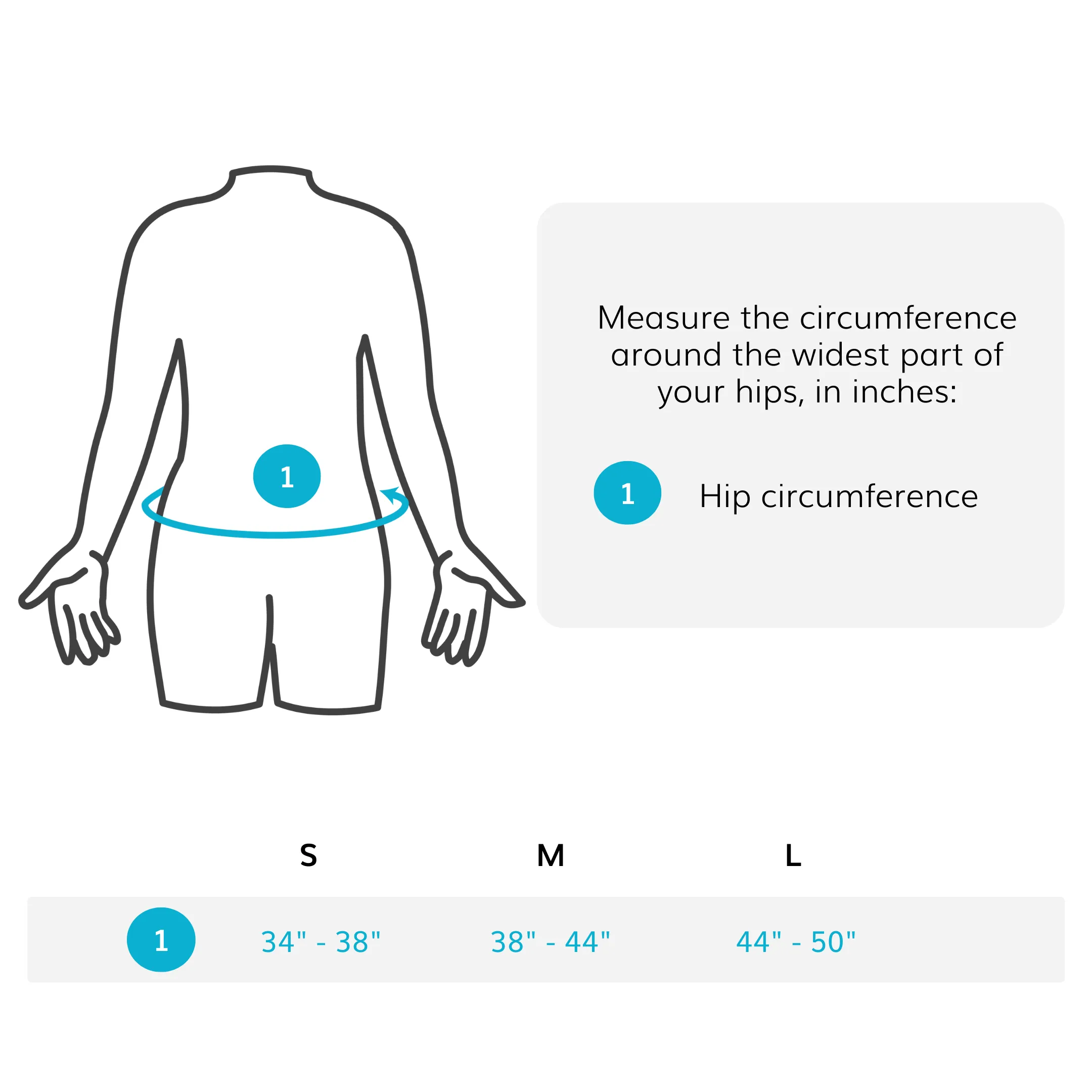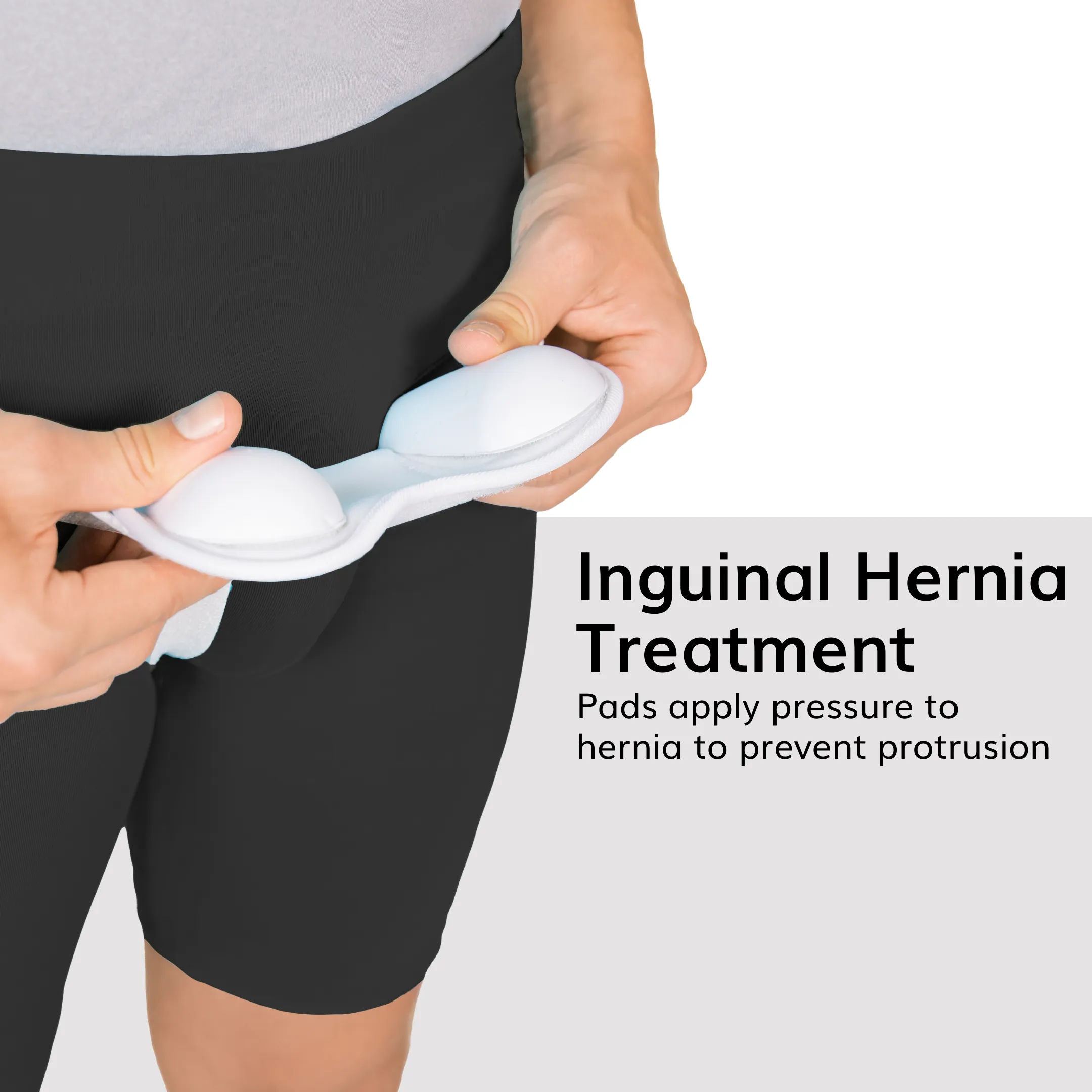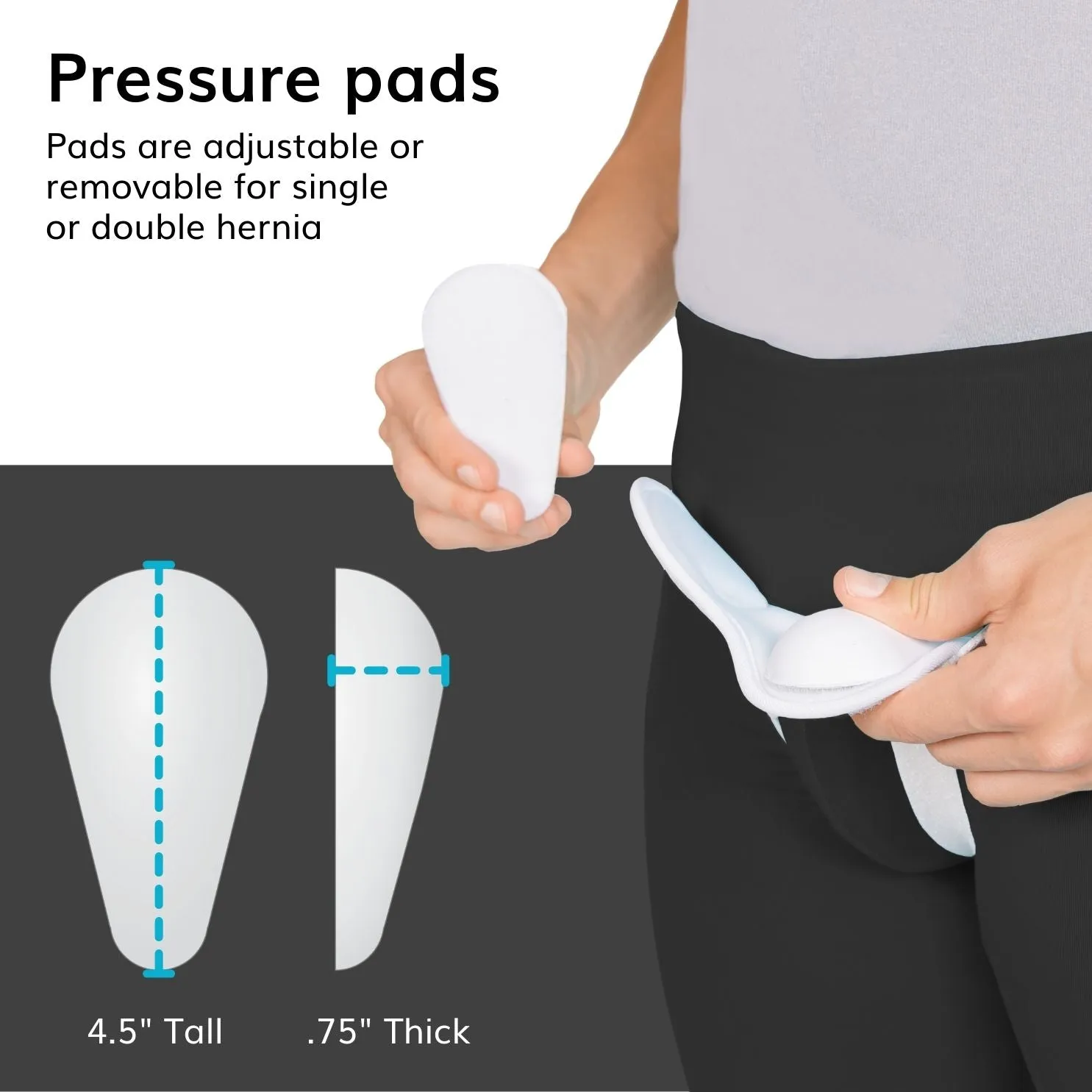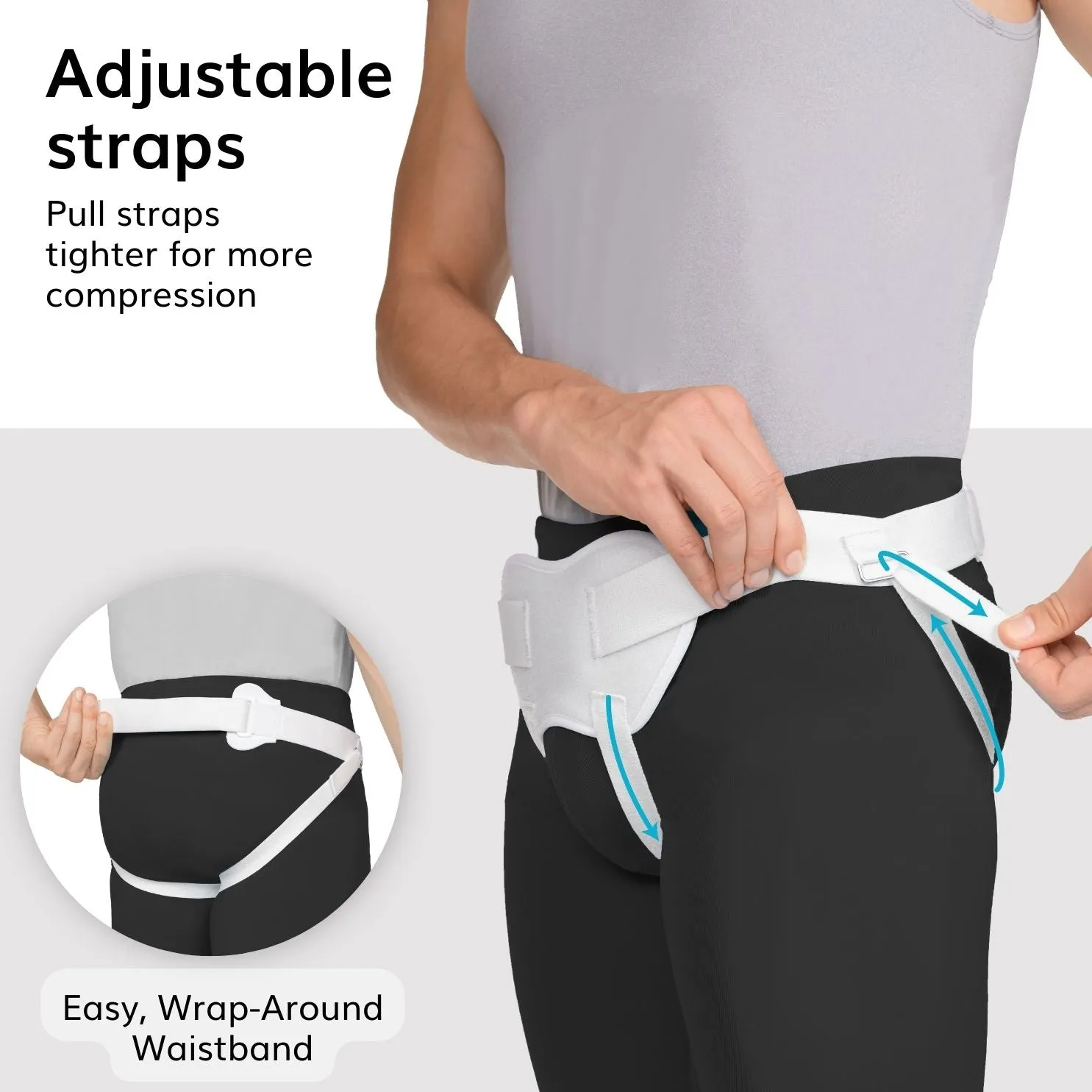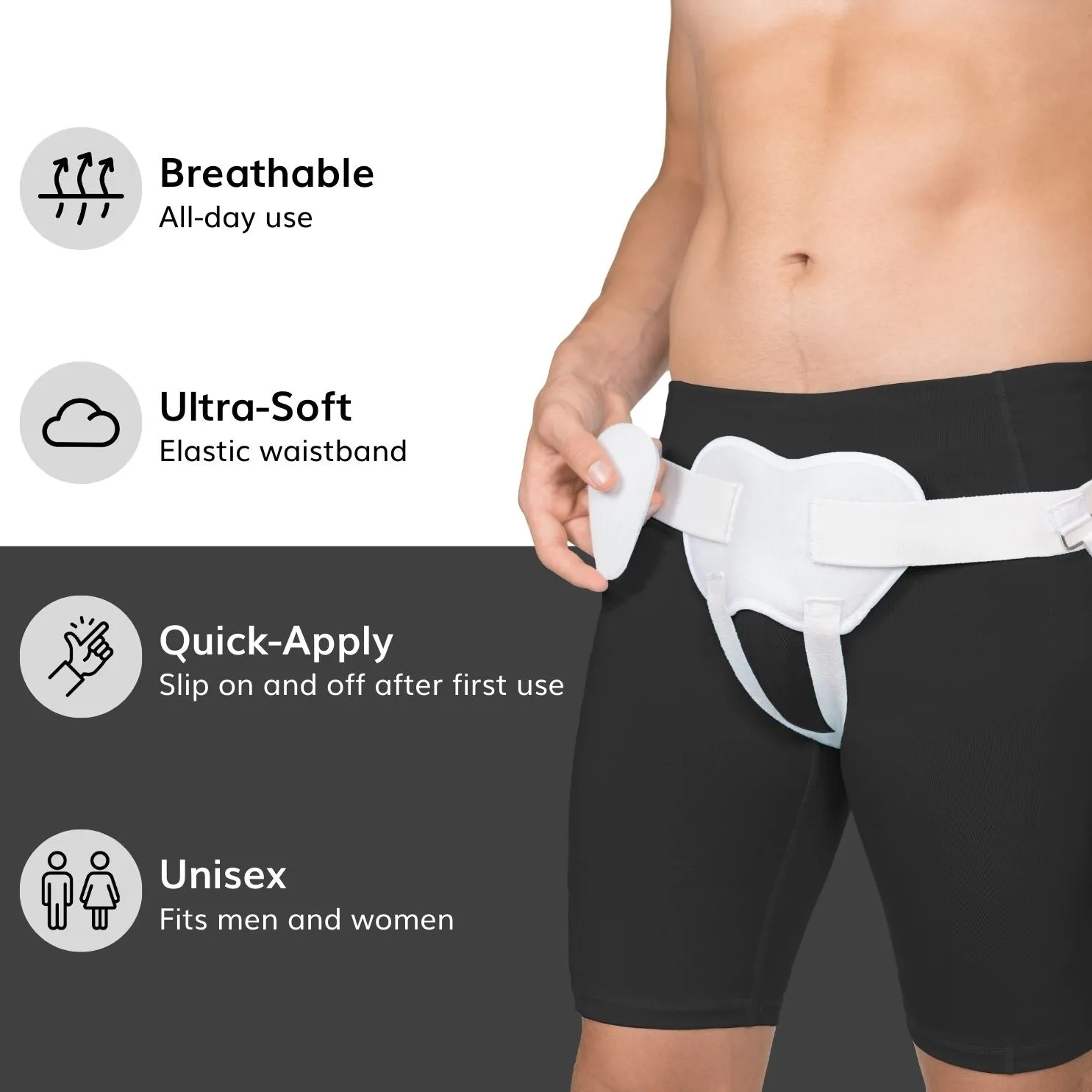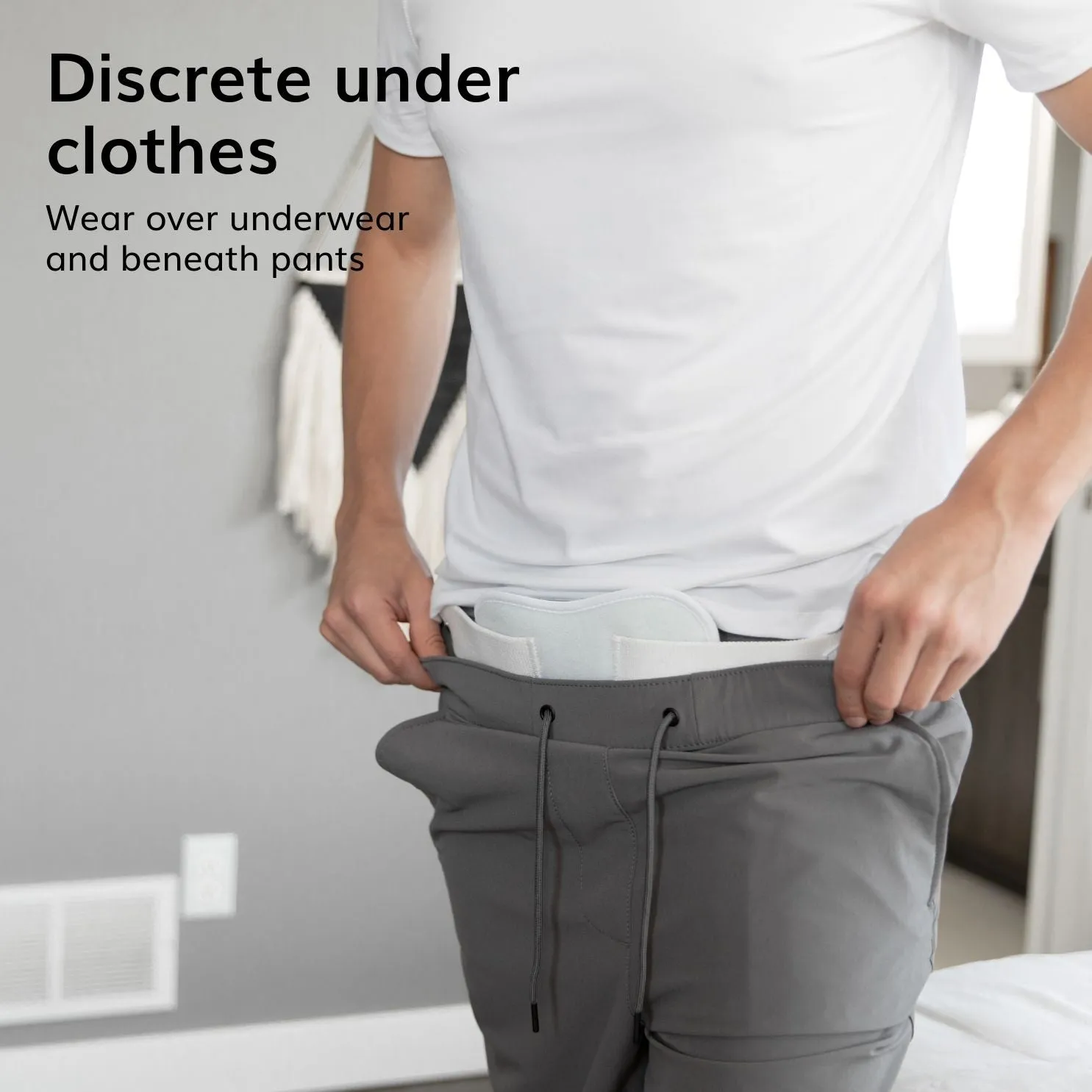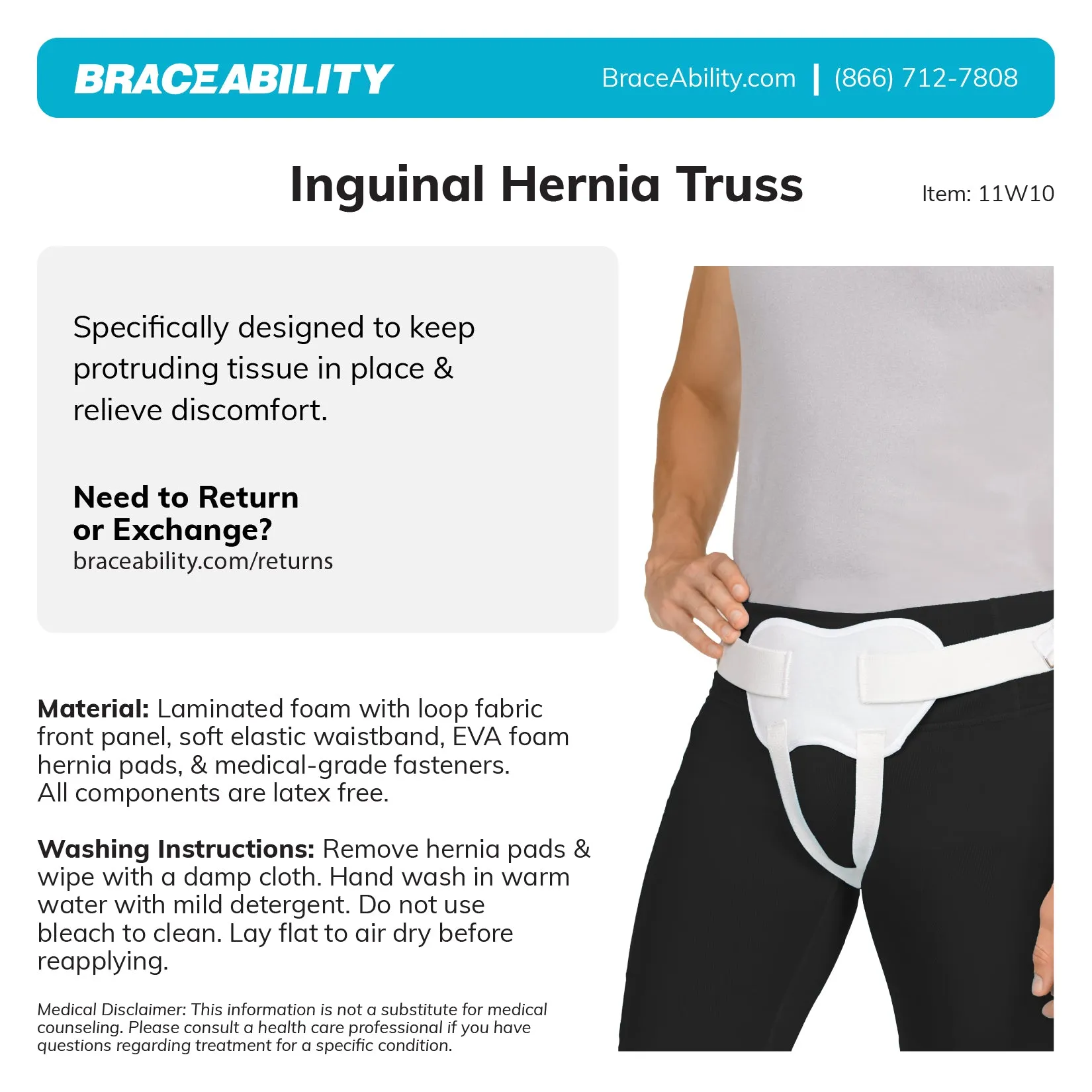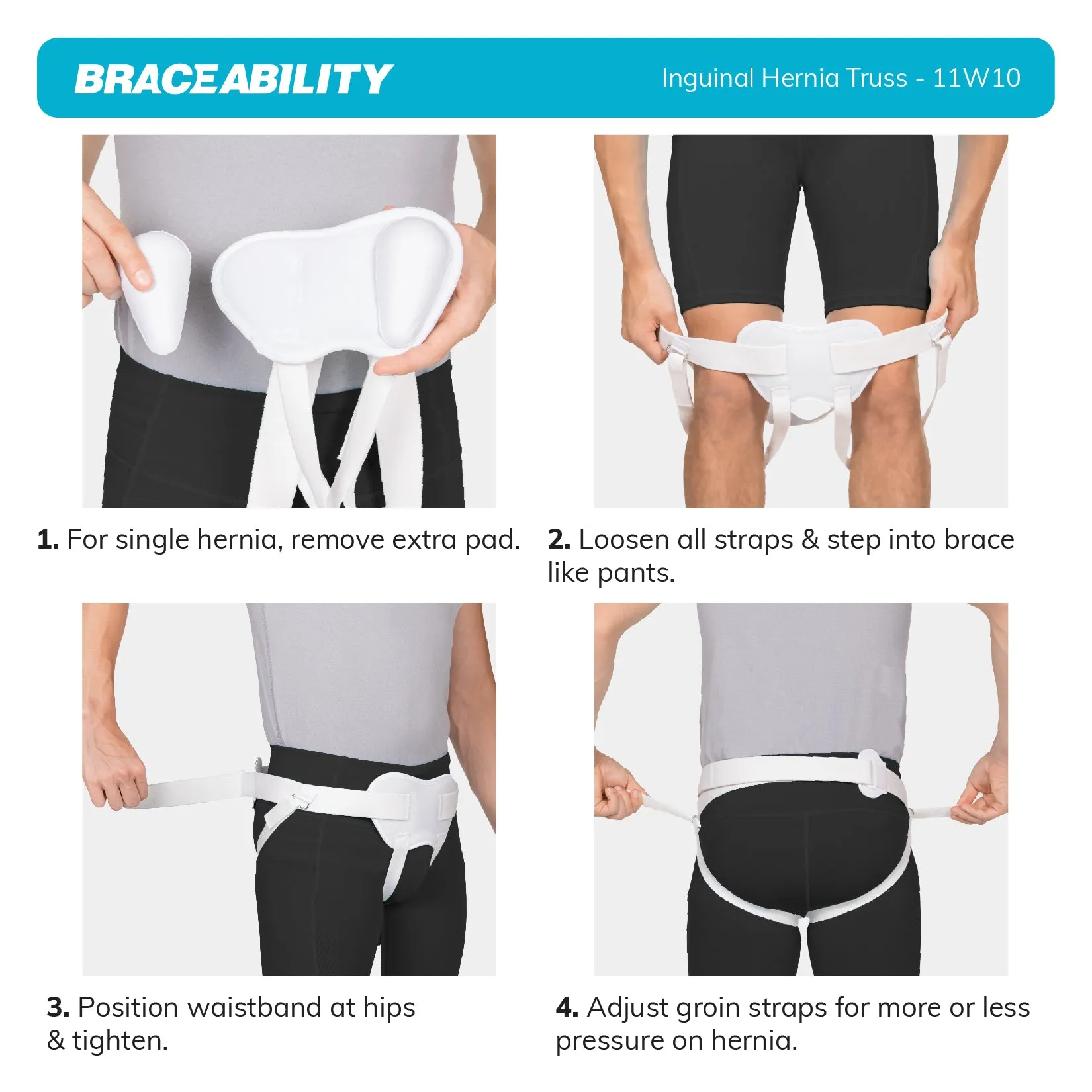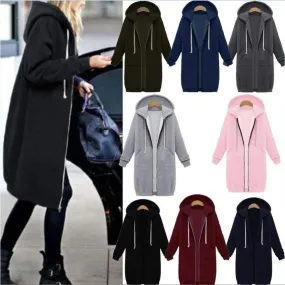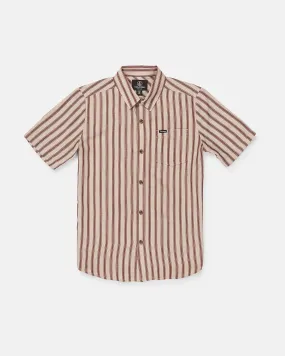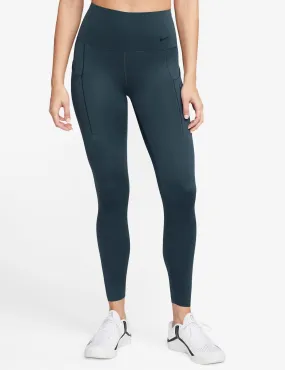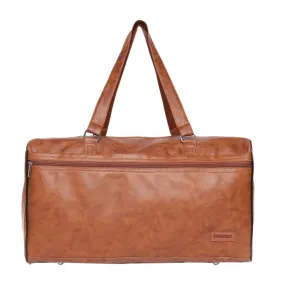Top 4 Favorite Features and Benefits of The Inguinal Hernia Belt
Perfect for Post or Pre-Surgery Relief
Whether you’re looking to prevent surgery or need extra support during post-surgery recovery, this hernia support belt does it all. Use pre-surgery or pre-surgery to provide constant, comfortable, and adjustable pressure to single and double inguinal hernias. Some patients use an inguinal hernia belt to hold off hernia repair surgery. If your hernia is causing significant discomfort, don't rely on a hernia truss. Instead, speak to your doctor about the best treatment and recovery options.
Lowkey, Discreet Design
Designed with daily use and comfort in mind, the hernia truss is made of durable, washable bled, and heavy-duty fastener straps. Simply slip the inguinal hernia support on under your clothes as you would underwear for all-day relief. Thanks to the robust fastener design, you can comfortably wear the support daily without worrying about sliding, twisting, or slipping. Wear the hernia belt while working, walking, sitting, standing, exercising, and completing other daily activities.
Includes Removable Compression Hernia Pads
High-quality, cushioned hernia pads are on both sides of the support device. Simply remove either one of the pads for single hernia support or keep both in for double hernias. In addition, the compression pads offer extra support that is comfortable against the area of your painful hernia. By wearing the hernia truss all day, you’ll find relief from the aching pain you’re used to feeling, or you’ll find protective support during recovery from surgery.
Adjustable Fit for Personalized Recovery
The hernia truss belt is completely adjustable in pressure and compression levels, featuring elastic tension straps that secure without uncomfortable buckles and snaps. It is also available in various sizes. To choose your size, measure using a flexible measuring tape and refer to the sizing chart pictured above. The inguinal hernia belt will benefit most adult men and women.
Femoral vs. Inguinal Hernia: What’s the Difference?
To find the proper treatment and pain relief device for a hernia in the groin or genital area, it’s essential to understand how to best treat your specific type of hernia. First, let’s discuss the difference between femoral and inguinal hernias and how to treat each type best.
Understanding Femoral Hernias
Femoral hernias are much more common to occur in women. A femoral hernia happens when a portion of your muscle tries to get back through the femoral canal consisting of veins, nerves, and arteries. Unfortunately, femoral hernia treatment will always require surgery. However, you can use the hernia truss belt to help you recover from surgery for protection, supportive compression, and pain relief.
Breaking Down Inguinal Hernias
More familiar to men, an inguinal hernia happens in the abdomen between the groin and pubis. The bulge created by an inguinal hernia may increase in size when you put pressure on the belly while coughing or sneezing. Depending on the severity of the hernia, surgery is not always required. Use the hernia support belt before or after surgery for pain reduction, support, and targeted compression.
To sum up the difference between inguinal and femoral hernias, it all comes down to the hernia's location. Femoral hernias occur in the femoral canal, while inguinal hernias occur in the inguinal canal. This hernia support belt can be worn to help treat and manage pain caused by both femoral and inguinal hernias.
How to Reduce an Inguinal Hernia Without Surgery
Depending on the severity, Inguinal hernias can occasionally be mild enough to avoid surgery safely. So, what steps should you take to ensure you don’t need to worry about an inguinal hernia procedure? First, let’s break down what an inguinal hernia is, its location, how to know if you have an inguinal hernia, and how to treat it best.
Where is an Inguinal Hernia Located?
An inguinal hernia occurs when bulging contents of the abdomen squeeze through a weak area in the lower abdominal wall. Inguinal hernias can occur at either of two passages through the lower abdominal wall, one on each side of the groin. These passages are called inguinal canals. If you have an inguinal hernia, you will likely discover a bulge on either side of the pubic bone.
What Does an Inguinal Hernia Feel Like?
Unsure if you have an inguinal hernia? Here are some of the most common signs and symptoms of an inguinal hernia:
- A visible bulge on either side of your pubic bone
- Burning or aching of the bulge area
- Pain or discomfort in your groin, especially when coughing or bending over
- Heavy sensation in your groin area
- Weakness or pressure in your groin area
If you are experiencing severe pain around the bulge area, you should immediately seek attention from a doctor or medical professional.
How to Check for an Inguinal Hernia:
If you have an inguinal hernia, you will likely see a visible, painful, and noticeable bulge in your groin on either side of your pubic bone. Check for the lump while standing or gently feeling around the affected area. Visit a doctor or medical professional to confirm if you have an inguinal hernia. To check, the doctor will likely have you stand and cough. In some cases, to check for an inguinal hernia, your doctor may need to order an imaging test, such as a CT scan or abdominal ultrasound.
How to Treat an Inguinal Hernia:
While an inguinal hernia isn’t necessarily dangerous, it still will not improve on its own. In some severe cases, an inguinal hernia can lead to life-threatening complications, especially if left entirely untreated. Surgery is most likely needed to fix an inguinal hernia, specifically when it is painful or rapidly enlarging. Inguinal hernia repair is a standard surgical procedure. Use the hernia truss to help prevent any further injury while you recover from surgery.
Common Types of Groin Hernias: What Kind of Inguinal Hernia Do I Have?
Testicular hernias occur when an organ or fatty tissue moves through a weakened spot in the surrounding muscle or fascia (connective tissue). Unsure just what type of inguinal hernia you’re dealing with? Let’s dive deeper into hernias, the most common types, and what they mean for your health.
Most Common Types of Inguinal Hernias:
Indirect Inguinal Hernia
An indirect inguinal hernia is the most common type of inguinal hernias. This type of hernia is most common in males when abdominal contents protrude through the internal inguinal ring and into the inguinal canal.
Direct Inguinal Hernia
A direct inguinal hernia most often occurs in adults as they age. The most common reason for a direct inguinal hernia is weakened muscles during adulthood. This type of hernia is much more prevalent in men.
Incarcerated Inguinal Hernia
This type of inguinal hernia cannot be pushed back into place due to tissue stuck in the groin, causing it to be nonreducible.
Strangulated Inguinal Hernia
Very rare, strangulated inguinal hernias are a more serious medical condition. This type of inguinal hernia occurs when an intestine in an incarcerated hernia has its blood flow cut off.
If you’re looking for support and pain relief for an abdominal hernia, check out BraceAbility’s line of .
Direct vs. Indirect Hernia
What is the difference between direct and indirect inguinal hernias? Direct inguinal hernias show a visible bulge from the posterior wall of the inguinal canal. Indirect inguinal hernias pass through the inguinal canal or the groin. With indirect hernias, it is much more challenging to feel the bulging defect of the hernia as it occurs behind the muscle fibers.
Frequently Asked Questions About This Hernia Truss Belt
- What conditions/injuries does this brace treat? Use post or pre-surgery to provide constant, comfortable, and adjustable pressure to single, double, indirect, or direct inguinal and femoral hernias.
- How does it work? Compression pads and adjustable tension straps support weakened groin muscles by applying constant, gentle pressure to your hernia.
- When should I wear it? Always talk to your doctor for specific usage instructions, but generally speaking, our inguinal hernia belt is a comfortable option for all-day wear.
- What is it made of? Laminated foam with loop fabric front panel, soft elastic waistband, EVA foam hernia pads, and medical-grade fasteners. All components are latex free.
- Who can wear it? Most adult men and women can benefit from this inguinal hernia truss.
- What size should I buy? Use a soft tape measure to find the circumference around your hips in inches. Then, refer to the sizing chart pictured above to find the best fit for you.
- Can I return it? Yes, but try on over clothing intentionally. Once worn, it cannot be exchanged or returned.
- Should I wear it under or over pants? It is suitable for long-time wear beneath your pants and over undergarments, such as compression shorts, underwear, or briefs.
- How do I put it on? Begin with straps entirely loosened. For a single hernia, remove the extra pad pocket. Step into the brace like underwear or pants. Position waistband at hips and tighten. Adjust groin strap to the desired level and attach fastener.
- How do I adjust the brace? Pull, modify, and secure the groin straps for more or less pressure on the hernia.
- Washing instructions: Remove hernia pads from pockets, and wipe down with a damp cloth. Do not use bleach. Lay flat to air dry.
- Other features:
- Easy to put on and take off
- Includes removable cushioned hernia pads
- Cost-effective alternative to inguinal hernia repair surgery
- Color: White.




